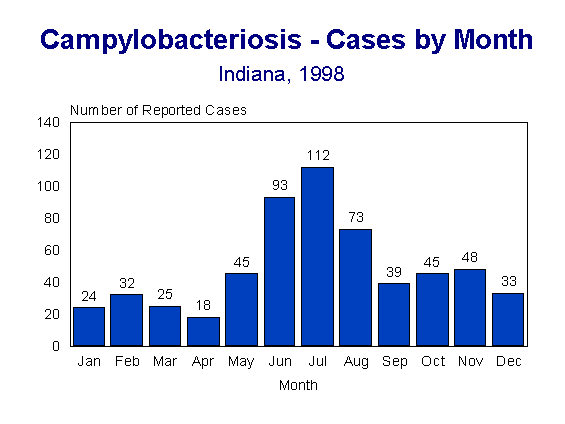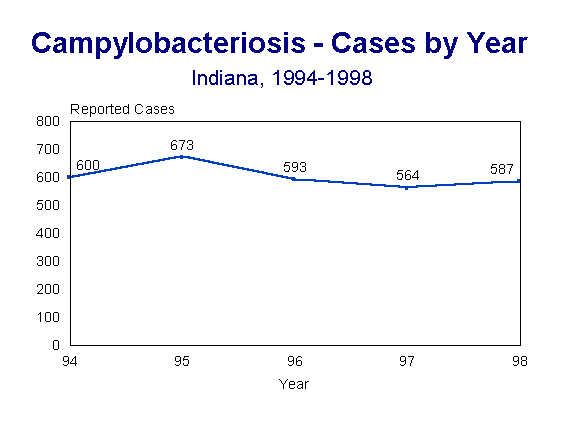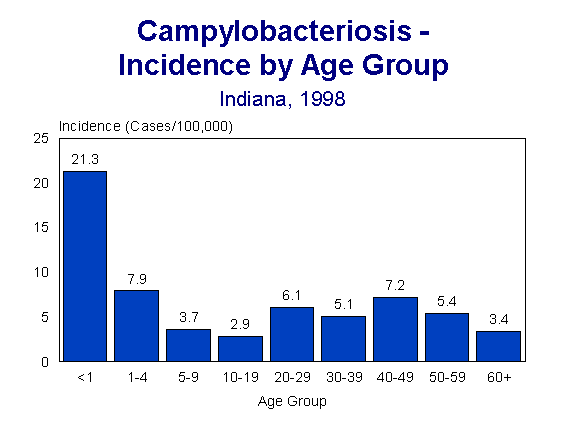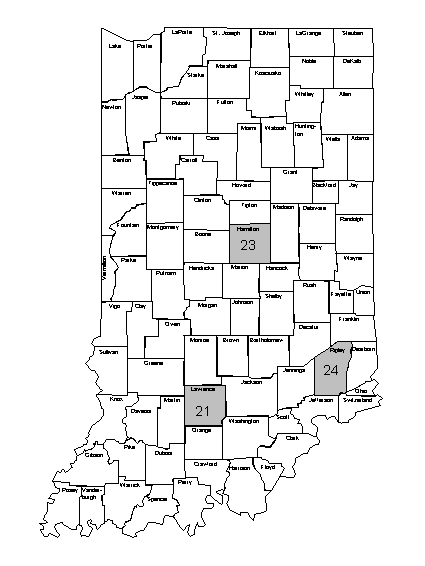
CAMPYLOBACTERIOSIS
Cases
= 587White = 5.4
Nonwhite = 3.8
Gender-specific rates
(per 100,000 population)Female = 8.5
Male = 10.3
Campylobacteriosis is a bacterial disease usually transmitted through raw or undercooked foods of animal origin, or through foods cross contaminated by animal products. It can also be transmitted person-to-person.
There were 587 cases of campylobacteriosis reported in Indiana in 1998, which was consistent with previous years (Figure 1). Incidence of disease was greatest during the summer months, as shown in (Figure 2).
Figure 1.
Figure 2.

Males (10.2) were more likely to be reported than females (8.5), and the
age-adjusted rate for whites (5.4) was 1.4 times higher than that for nonwhites (3.8).
Age-specific rates were greatest among infants (21.1) followed by preschoolers (7.9)
(Figure 3).
Figure 3.

Among counties with at least 5 cases reported, the incidence rate was highest in Ripley (24.4), Hamilton (23.0), and Lawrence (21.0) Counties (Figure 4).
Figure 4. Campylobacteriosis Incidence Rate by County
(among counties with > 5 reported cases), Indiana, 1999

There were no outbreaks of campylobacteriosis reported in Indiana in 1998.
[an error occurred while processing this directive]